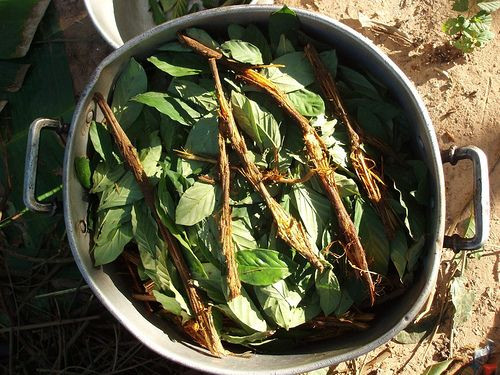Diabetes Treatment May Soon Involve Psychedelic Ayahuasca; Chemical Harmine Triples Beta Cell Count

The role of psychedelics like LSD and magic mushrooms in modern medicine is being uncovered more than ever these days, with their uses ranging from easing anxiety to treating post-traumatic stress disorder. But, as a new study shows, their role isn’t only limited to psychiatric conditions but chronic diseases as well. In this case, a chemical in the Amazonian psychoactive brew ayahuasca may actually promote the growth of insulin-producing beta cells in people with diabetes.
Ayahuasca, which is also the name for the Banisteriopsis caapi vine it’s made from, is commonly associated with the indigenous tribes of the Peruvian Amazon, where shamans brew it with other psychedelic plants to induce an hour’s long trip full of spiritual revelations, often viewed as a reawakening. In the U.S., the drug is classified as a schedule 1 drug under the Controlled Substances Act of 1970, which defines it as having “no currently accepted medical use and a high potential for abuse.” They’re considered “the most dangerous drugs of all the drug schedules with potentially severe psychological or physical dependence.”
The psychoactive chemical that makes ayahuasca a schedule 1 drug is dimethyltryptamine, more commonly known as DMT. Researchers from the Icahn School of Medicine at Mount Sinai in New York City believe that if they can figure out a way to bypass the effects of this chemical, they’ll be able to tap into the effects of another chemical in the ayahuasca plant called harmine. In their new study, published in the journal Nature Medicine, they found this chemical was the only one out of over 100,000 the ability to reproduce insulin-producing beta cells in diabetic mice, thus normalizing glycemic control.
Beta cells are located in the islets of the pancreas, where they work to produce insulin and control blood sugar levels. “In children and adults with type 1 diabetes, they’ve lost 99 percent of their beta cells, so they cannot make enough insulin. That’s the cause of their diabetes,” senior author of the study Dr. Andrew Stewart, director of Icahn’s Diabetes, Obesity, and Metabolism Institute, told Healthline. “People with type 2 diabetes have about 50 or 60 percent reduction in their number of beta cells in their pancreas.”
The researchers discovered harmine’s ability to reproduce beta cells in a culture. Then, they injected human islets into diabetic mice and administered harmine, triggering beta cell production and normalizing blood glucose control. Harmine was able to triple the number of beta cells within the mice’s pancreas.
“Our results provide a large body of evidence demonstrating that the harmine drug class can make human beta cells proliferate at levels that may be relevant for diabetes treatment,” Stewart said in a press release. “While we still have a lot of work to do in improving the specificity and potency of the harmine and related compounds, we believe these results represent a key step toward more effective future treatment of diabetes.”
Ayahuasca in its typical form is already used to treat PTSD, alcoholism, and chronic anxiety, among people who venture to areas where its use is prevalent. However, it’s an extremely powerful drug that not only induces an intense psychedelic experience, which in itself can become a bad trip, but also causes severe vomiting, and increases heart rate and blood pressure.
Source: Wang P, Alvarez-Perez JC, Felsenfeld D, et al. A high-throughput chemical screen reveals that harmine-mediated inhibition of DYRK1A increases human pancreatic beta cell replication. Nature Medicine. 2015.



























